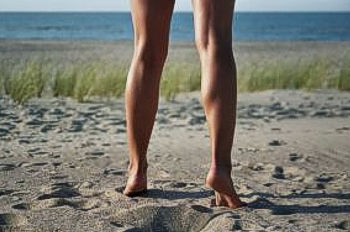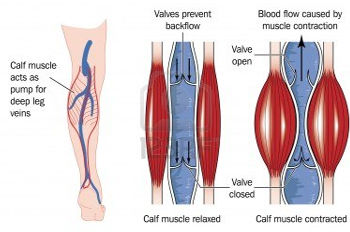 When taking up an exercise such as jogging, more serious running or just about any physical activity that pushes your body beyond its comfort zone, you’ll need an appropriate pre and post exercise warm up and wind-down routine if you want to avoid injuries. In addition to this you should always remember to avoid eating at least one hour before you exercise.
When taking up an exercise such as jogging, more serious running or just about any physical activity that pushes your body beyond its comfort zone, you’ll need an appropriate pre and post exercise warm up and wind-down routine if you want to avoid injuries. In addition to this you should always remember to avoid eating at least one hour before you exercise.
It’s all part of the process of getting fitter faster while listening to your body’s needs and respecting its capacity.
A common area for problems when running is the foot and ankle region which is where most of the impact occurs and blood pressure increasing during training. Keeping your calf muscles flexible can help you avoid tendonitis and plantar fasciitis by softening the shock as your foot hits the ground. One popular injury preventive training method which focuses on flexibility and strength is the Wharton Performance Model.
Stretching before and after your run can not only improve your performance and stamina, but also prevent some of the most running injuries.
Warm up routine:
 To stretch the outer calf, sit on the ground with both legs straight in front. Loop a rope or cloth band around the ball of each foot in turn and flex the foot back towards your ankle – toes towards your knee.
To stretch the outer calf, sit on the ground with both legs straight in front. Loop a rope or cloth band around the ball of each foot in turn and flex the foot back towards your ankle – toes towards your knee.
To flex the inner calf muscles sit with one leg straight in front and the other bent up with knee towards your chest. Grab the ball of the foot of the bent leg, keeping the heel on the ground and pull the foot towards your body.
To stretch your Achilles tendon, which attaches your heel to your calf, sit with one leg out straight and bring the other up to your chest with the heel of that foot against your buttocks. Grabbing the ball of that foot pull it up towards your body. Feel the stretch up the back of that leg from the Achilles’ to the calf.
There are many other stretches runners should incorporate into their pre and post workout routines and remember also that muscle cramps can also be caused by dietary deficiencies, such as insufficient minerals and electrolytes.